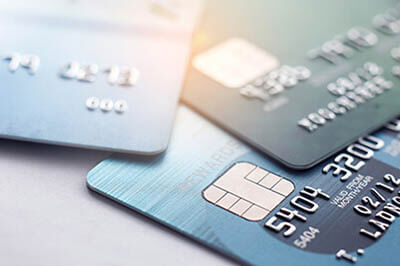How Do Personal Lines of Credit Work
A personal line of credit can be a big help when you need cash immediately. Think of it as a bridge to accomplishing certain goals, paying unexpected expenses, or keeping personal finances in balance. By definition, a personal line of credit (POC) is an unsecured revolving account with a spending limit that you can borrow money from as you need it. A POC comes with a variable (rather than fixed) interest rate and is designed to be available for a set period. When you choose the amount of your POC, the lender won’t give you a check for the full value. Instead, you can withdraw smaller amounts as needed.

Like a
credit card, a
personal line of credit has a preset payment schedule, and the interest you pay is charged on the outstanding balance until it’s paid off.
Who Uses Personal Lines of Credit?
People who use personal lines of credit are typically in good financial shape. They have jobs and are responsible with their money. They have good credit scores and a solid credit history. They have some liquid accounts, and likely have assets like
CDs, 401(k)s and/or
stocks.
However, taking out cash from accounts like these comes with withdrawal penalties. For that reason (and others), taking out a personal line of credit for certain quick access cash needs like funding a major purchase, or covering unexpected expenses like a large tax bill, is an attractive option.
The flexibility of having a POC can also be helpful for an open-ended project like remodeling when the final costs might end up being more than the estimate.
Personal lines of credit can also be a great option for people who work on commission, or work as freelancers, and therefore have somewhat irregular income. The peace of mind of knowing cash is available when needed to help manage cash flow and can be paid back quickly when receivables come in can be a tremendous help in these cases.
Most importantly, keep in mind that a POC should be used as a
backup plan, not for daily expenses or to fund an expense you couldn’t otherwise afford or pay back. Not being able to pay off a POC can put you in dire financial straits and inflict long-term damage on your credit rating.
Understanding the Three Types of Personal Credit Lines
POCs are offered by almost every type of financial institution, from banks to credit unions to online lenders. These unsecured loans do not require collateral like a secured loan.
The institution you work with will determine how your personal lines of credit will be paid off:
1. You may have separate draw and repayment periods: With this type of POC, you have distinct draw and repayment periods. You’ll be able to access funds during the draw period, then make monthly payments during the repayment period.
2. You may have a balloon payment: With this type of POC, you’ll need to pay the entire balance off at the end of the term. If you can’t, you’ll need to refinance your loan and could end up with a much higher interest rate.
3. You may have a demand line of credit: You can borrow on a daily or on-demand basis, but your lender reserves the right to demand full loan repayment at any time.
Comparing Loan Types: Personal Lines of Credit, Personal Loans, Home Equity Lines of Credit, and Cash Advances
The
type of loan you choose varies depending on your needs and goals. Here are some key facts to consider about each one:
Personal Line of Credit (POC)
- Borrow only what you need and only pay back on the draws you make
- Variable interest rate (but typically lower than fixed loan rates)
- Set repayment schedule
- Best for paying off unexpected expenses that pop up, or bridging gaps in income, (i.e. you work on commission)
- Not tax deductible
Personal Loan
- Fixed interest rate
- Fixed monthly payment, but options for term length
- Use funds for whatever you choose
- Best for covering a high-priced purchase or
paying off a high-interest debt
- Locked into fixed repayment amounts
Home Equity Line of Credit (HELOC)
- Borrow against the equity in your home (your home is your collateral)
- The more you’ve paid into your home, the larger your potential line of credit
- Tax deductible
- Interest rate tends to be lower than a POC
- Best for home remodeling projects
- Can be risky if you can’t pay it back, because you could lose your home
Credit Card Cash Advance
- Borrow exact amount needed
- Higher interest rate (APR) than personal lines of credit
- Not tax deductible
- Has high usage fees
- Easy to get, no collateral required
- Best for emergencies
Consider Your Credit Score Before Getting a Line of Credit
Credit bureaus view a personal line of credit like any other open line of credit, comparable to a credit card or an auto loan, for example. If your credit score is already a bit shaky, you’ll likely have difficulty being approved for a POC. If you’re in good standing, but run into trouble paying off your POC, make late payments, or use a significant amount of your balance (over 30%), your credit score could be negatively impacted. A personal line of credit offers many benefits under the right circumstances, but it pays to consider your options carefully.
Let Us Help You Make an Informed Choice
The team at First National Bank and Trust can provide great advice and guidance when it comes to choosing the
best loan options to achieve your goals. We’re available to chat by phone at 1-800-667-4401, online via our
message form options, or visit one of our
convenient locations in Southern Wisconsin and Northern Illinois.